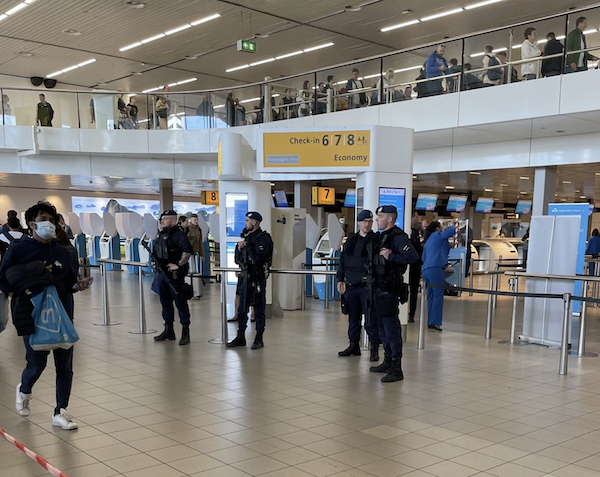The Netherlands readies for new EU border check system


There will be major changes to the way the European Union manages its external borders in 2023. Here is what changes and how the Netherlands is preparing.
All non-EU nationals arriving and leaving the Schengen area will be registered under a new border-check system that will be introduced in May. Six months later, non-EU nationals from visa-free countries will have to apply for a digital travel authorisation to be able to access Schengen states.
The EU entry/exit system (EES)
In May the EU entry/exit system (EES) is expected to become operational in the 27 countries of the Schengen area that have abolished passport and border controls at their mutual borders (EU members except Bulgaria, Cyprus, Ireland and Romania, plus Iceland, Liechtenstein, Norway and Switzerland).
The system will be used at external border crossing points to record the data of non-EU visitors entering and leaving the Schengen area. The data collected will include the person’s name, type of the travel document, biometric data (fingerprints and facial images), the places of entry and exit, and the length of their stay.
With the EES, passports will be automatically scanned and border guards will no longer need to manually stamp them. The data will be kept in an EU-wide database for three years, which will renew at each entry.
EU citizens and third-country nationals who are resident in the Schengen area, however, will not be subject to such checks.
Concerns for delays
The system was created to increase border security and its aim is to identify short-term visitors who stay longer than permitted in the Schengen area (the limit is 90 days in a 180-day period). It will also support the ‘identification of terrorists, criminals, suspects, and victims of crime’. On the other hand, EU authorities say it should make checks easier for non-EU citizens once the data is collected the first time.
But there are concerns about security, given the system will generate a huge database of personal information about the millions of people travelling to the EU each year. Some also fear major delays at the border when the EES is introduced.
The German authorities warned that ‘control times for passengers will increase significantly’ with the EES while the Austrian authorities expected ‘process times to double compared to the current situation’. The forecasts come from research by the EU Council secretariat, and published by civil liberties group Statewatch.
How the Netherlands is preparing
In the Netherlands, the EES will be ‘implemented at all international border crossing points in accordance with the EES Regulation,’ a justice ministry spokeswoman told Dutch News.
‘This applies to the maritime and air border crossing points, including Hoek van Holland, IJmuiden, Schiphol, Rotterdam airport as well as at the stations in Rotterdam and Amsterdam for the Eurostar train,’ she said.
The Dutch government said previously it plans to introduce a mobile app and self-service kiosks, where third-country nationals can pre-register their data before being directed to border guards for the checks. E-gates will also be made available to non-EU citizens.
Dutch authorities will probably adopt a ‘progressive approach’ with limited data initially registered at Amsterdam and at the maritime ferry border crossing points, according to Statewatch report.
Next steps
Six months after the EES, in November, the European Travel Information and Authorisation System (ETIAS) should become operational too.
This will only concern visitors from countries or territorial authorities for which the EU has a visa-free regime, such as the UEA, Argentina, Mexico, the US and the UK.
Before travelling, non-EU nationals who do not need a visa to travel to the Schengen area will have to apply for a digital travel authorisation through the EIAS official website or app, and pay a fee of €7. This authorisation will have to be shown to border guards upon arrival.
Thank you for donating to DutchNews.nl.
We could not provide the Dutch News service, and keep it free of charge, without the generous support of our readers. Your donations allow us to report on issues you tell us matter, and provide you with a summary of the most important Dutch news each day.
Make a donation